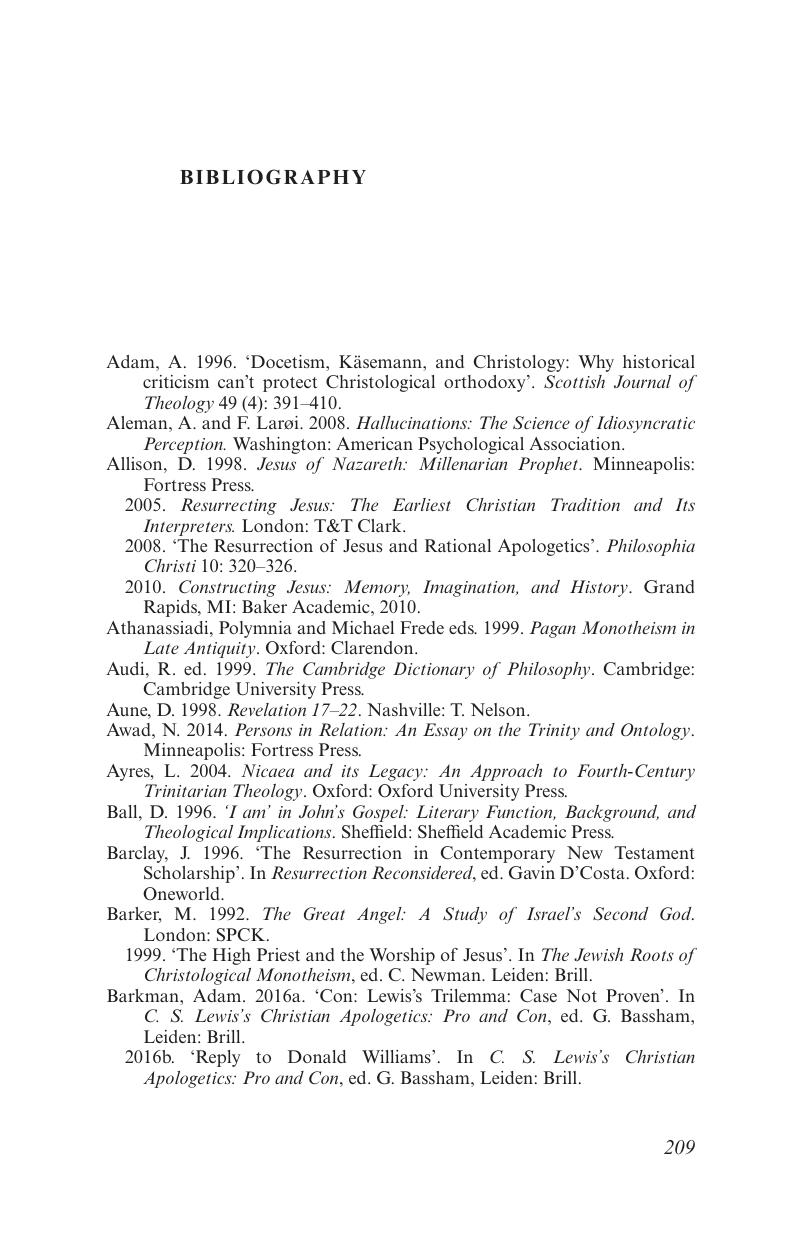Book contents
- The Origin of Divine ChristologyVolume 169
- SOCIETY FOR NEW TESTAMENT STUDIES:
- The Origin of Divine Christology
- Copyright page
- Dedication
- Contents
- Acknowledgements
- 1 Introducing the Theories and Approaches Concerning the Origin of Divine Christology
- 2 The Highest Christology Was Present Among the Earliest Christians: The Evidences
- 3 Replies to Objections Involving Various Exalted Figures in Second Temple Judaism
- 4 Replies to Other Objections Concerning the Highest Christology of the Earliest Christians
- 5 The Extent of Highest Christology in Earliest Christianity
- 6 The Best Explanation for the Origin of Highest Christology
- 7 Assessing the Evidences for the Origin of Highest Christology in the Gospels
- 8 Conclusion
- Bibliography
- Scripture and Apocrypha Index
- Index of Other Ancient Sources
- Index of Authors
- Index of Subjects
- References
Bibliography
Published online by Cambridge University Press: 13 July 2017
- The Origin of Divine ChristologyVolume 169
- SOCIETY FOR NEW TESTAMENT STUDIES:
- The Origin of Divine Christology
- Copyright page
- Dedication
- Contents
- Acknowledgements
- 1 Introducing the Theories and Approaches Concerning the Origin of Divine Christology
- 2 The Highest Christology Was Present Among the Earliest Christians: The Evidences
- 3 Replies to Objections Involving Various Exalted Figures in Second Temple Judaism
- 4 Replies to Other Objections Concerning the Highest Christology of the Earliest Christians
- 5 The Extent of Highest Christology in Earliest Christianity
- 6 The Best Explanation for the Origin of Highest Christology
- 7 Assessing the Evidences for the Origin of Highest Christology in the Gospels
- 8 Conclusion
- Bibliography
- Scripture and Apocrypha Index
- Index of Other Ancient Sources
- Index of Authors
- Index of Subjects
- References
Summary

- Type
- Chapter
- Information
- The Origin of Divine Christology , pp. 209 - 231Publisher: Cambridge University PressPrint publication year: 2017

